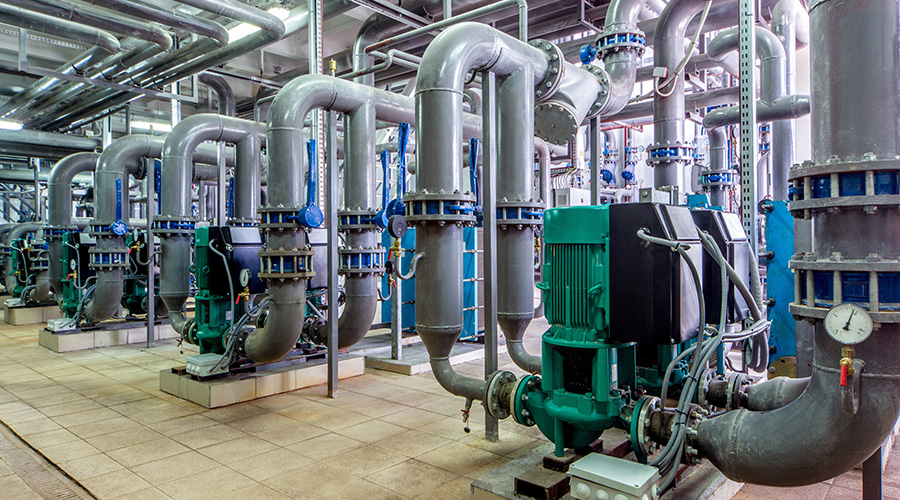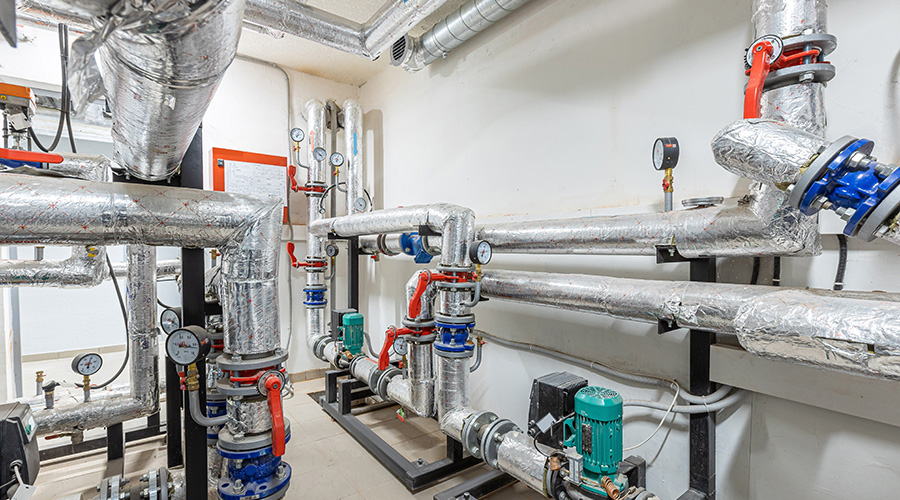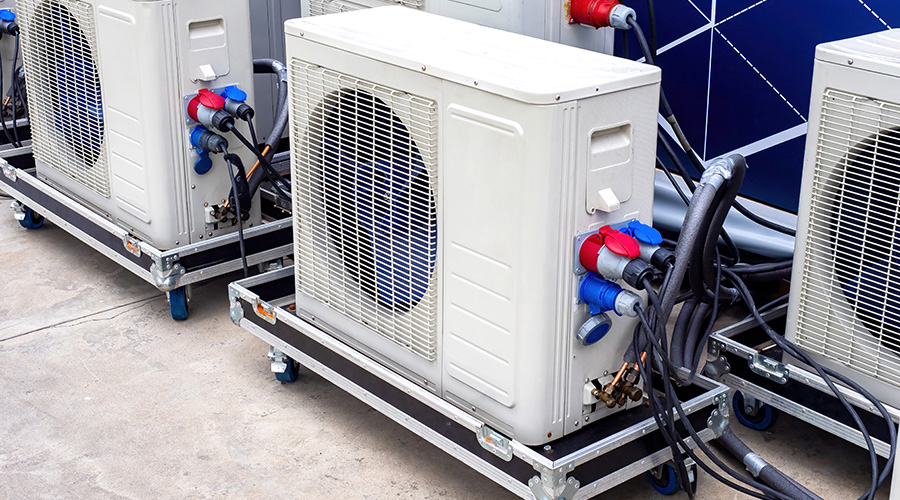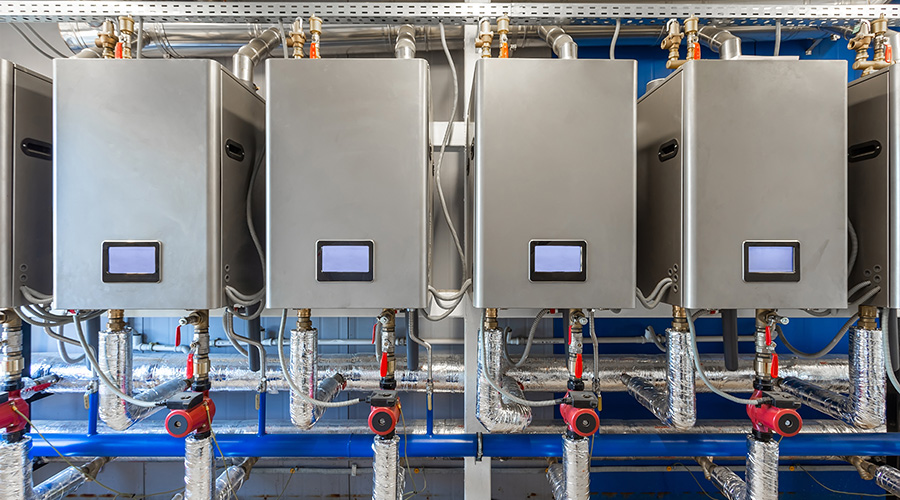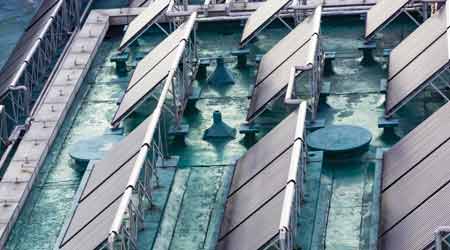 Solar thermal water heaters are a mature technology that is worth considering in many facilities.
Solar thermal water heaters are a mature technology that is worth considering in many facilities.Domestic Hot Water System: Choose Wisely
Whether for new construction or replacing existing equipment, these tips can help facility managers choose the best domestic hot water system for their situations.
Choosing domestic hot water heating equipment for a new facility has to start with a careful analysis of the usage patterns and degree of reliability required. Choices for domestic hot water production and delivery are totally dependent on user needs, and one size does not fit all. User groups should be fully involved in the decision-making process, and in some cases they will have already prepared a list of requirements and a model specification. In multi-user facilities, a single strategy may be difficult, prompting the need for discrete domestic hot water systems to be designed and installed to suit individual user requirements. Working with a consultant well versed in domestic hot water applications is essential in order to close in on an ideal system.
Designers will need to know the general usage categories: constant load, from high volume to low volume, or intermittent load, from high volume to low volume. Once the volume and delivery profiles have been determined, the capacity requirements will then be examined through the lens of reliability required for each user. At this point in the process, a budget for first installed cost and ongoing maintenance costs can be worked up, with some facility managers preferring to classify domestic hot water systems as tenant improvements so as to assign more responsibility for cost and maintenance to leaseholders. Electric water heaters of various sizes and capacities are still popular because of their simplicity, reliability, and low first cost, but rising electricity rates are squeezing operating budgets to the point where energy managers are looking for alternatives.
Replacement planning
Commercial domestic hot water generation is considered “hard” service for water heaters and related mechanical equipment, and despite their more robust construction, regular replacement of components is the norm. Replacement intervals will vary greatly from building to building because of differences in incoming water quality and the degree of full-fire operation required. Because of this, replacement strategies should be adopted long before existing equipment fails, especially if upgrading to more efficient equipment is planned, since more efficient equipment may require significant alteration of the mechanical system during change-out. In critical service applications, a detailed plan with a sequential approach to installation and commissioning of new equipment followed by demolition and removal of old equipment is essential. Temporary domestic hot water is sometimes supplied by mobile equipment in order to facilitate change-out to an updated system, and mechanical rooms should be of adequate size to allow ongoing work.
Even with forward planning, many water heater replacements occur in emergency situations after catastrophic failure of existing equipment. Most manufacturers of small- to medium-sized commercial water heaters tend to maintain long-term production of the same model of heater and keep their distribution chains stocked up to make replacement a quick and painless process. For the same reason, newer models tend to be backward-compatible with older ones as far as piping, venting, and electrical connections are concerned. Ease of replacement explains why many facility managers will opt to maintain the status quo and replace like-for-like when the time comes, rather than looking at upgrades.
Replacement of larger commercial equipment is a whole different ball game. Because even the big systems are at risk of sudden failure, it’s essential for facility managers to estimate equipment life spans based on manufacturer’s recommendations along with continuous assessment through preventive maintenance programs. Replacing this equipment usually requires considerable time for engineering, equipment acquisition, contract bidding, and mechanical contractor mobilization before any actual work can take place — waiting for existing equipment to fail is not an option. Proactive facility managers are always looking at the potential for energy efficiency alternatives to existing equipment, requiring consultation with domestic hot water experts long before new equipment is needed.
Related Topics:













